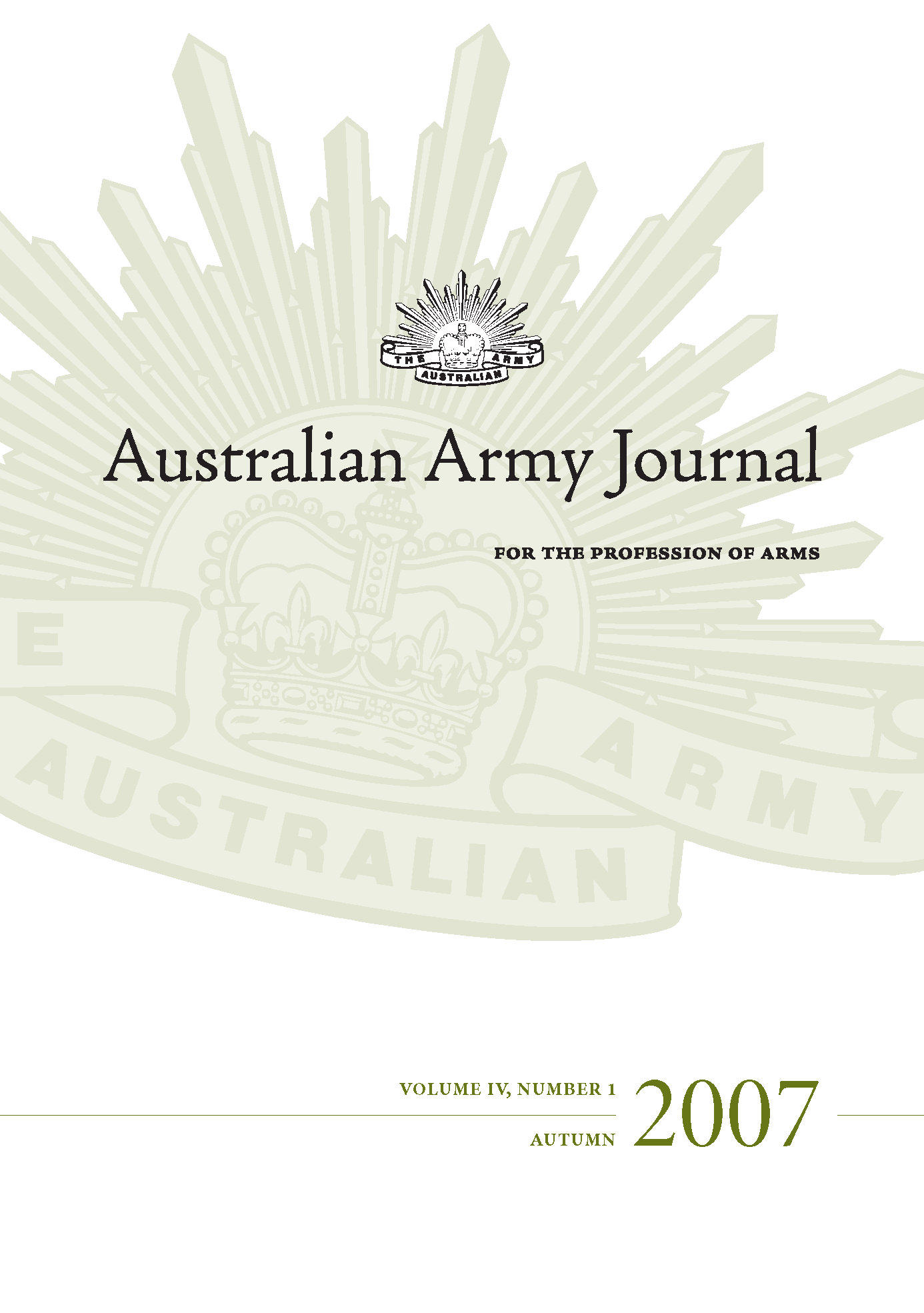This edition of the Australian Army Journal continues our concerted focus on current and recent operations. The Australian Army is operating in diverse theatres across the full spectrum of operations. The efforts of men and women in these complex contingencies continue to enhance the reputation of the Army.
The Chief of the Army reflected on the esteem in which we are held by the nation in his remarks commemorating the Army’s Birthday in March. We republish these remarks in this edition of the Army Journal to encourage reflection on the solemn obligation that service in the Army in a time of war imposes on every one of us.
The Army is one of Australia’s oldest continuous institutions. We have made an enormous contribution to the nation and this is reciprocated by the high level of trust reposed in us by our fellow citizens. Ever since the deployment of INTERFET to East Timor in 1999, the Army has operated at a very high tempo and under constant scrutiny. Our operational performance has been very sound.
As this edition is published, our commitment to security and nation-building in Afghanistan is being expanded. In March, the Government announced that a Special Forces Task Group and supporting elements would return to Afghanistan.
Accordingly, it is timely to publish the observations of an Australian officer, Major Michael Scott, who served in Afghanistan with two US Army Provincial Reconstruction Teams and a Dutch PRT. In coming months the Land Warfare Studies Centre is devoting considerable effort—both in the pages of this Journal and our other publications—to raising awareness of the history and culture of this increasingly critical theatre of operations.
Of course, operational performance is contingent on the quality of our training. In that context the article by Captain Cameron Leckie is essential reading for all ranks and corps. In the complex battlespace of the twenty-first century, every soldier must be capable of surviving and prevailing in close combat. The significant casualties sustained by logistic units in Iraq, especially convoys, exemplifies this grim lesson. The United States Marine Corps insists that ‘every Marine is a rifleman.’
Under the rubric of our ‘I’m an Australian soldier’ program, we have set this same benchmark for ourselves, through our aspiration that every soldier, regardless of specialty, master close combat. At the very least this demands a high standard of individual weapons skill. As Captain Leckie argues in his article this is easier said than done.
Since its inception the Army Journal has sought your active support. We have been encouraged by the sustained interest of all ranks in the Journal, which is manifested through a steady flow of articles from the field.
Consequently, we now feel it is appropriate to increase the frequency of publication of the Journal. In 2007, we intend to publish three numbers of the AAJ—this Autumn edition, a Winter edition in late August and a Summer edition just before Christmas. This has become possible through the support that the Army has given to the Journal as well as the splendid work of the Land Warfare Studies Centre Staff, particularly our Publications Manager, Mr Scott Hopkins.
We look forward to your continued interest in the Army Journal
The Publisher

